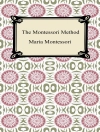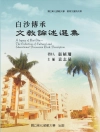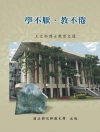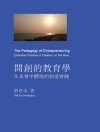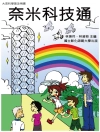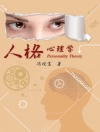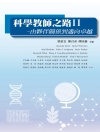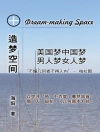This book offers a range of approaches to teaching higher education design students to learn to design collaboratively and creatively, through transdisciplinary, multidisciplinary, cross-disciplinary and interdisciplinary learning experiences.
It highlights that the premise of traditional disciplinary silos does little to advance the competencies needed for contemporary design and non-linear career paths. It makes the point that higher education should respond to the impacts of a changing society, including fluctuating market demands, economic variations, uncertainties, and globalization.
Chapters highlight approaches that address this changing landscape, to meet student, industry and societal needs and reflect a range of design education contexts in which the authors have taught, with a focus on experiences at the Queensland University of Technology, Australia, but also including collaborations and comparative discussions elsewhere in Australia and globally, spanning Europe, Asia, the Middle East, and the United States.
The book is positioned not as a definitive theoretical model for transdisciplinary design education but instead as a collective of chapters in which many forms of learning are explored through overarching themes of curriculum design and experiential and authentic learning and collaboration, transforming professional identities, and design cultures.
Inhaltsverzeichnis
List of Figures
List of Tables
Foreword – Dr Brandon Gien
Acknowledgements
Introduction: Design and the Changing Educational Landscape – Lisa Scharoun, Deanna Meth, Renata Lemos Morais, and Philip Crowther
– Exploring transdisciplinarity
– Introducing our Australian design education context and collective learnings
- Overview of chapters
PART 1: DESIGNING EFFECTIVE CURRICULA: TOWARDS TRANSDISCIPLINARITY
1. Curriculum Design and Development to Enhance Transdisciplinary Skills Development – Sheona Thomson, Andrew Scott, and Philip Crowther
– The changing role of universities
– Building a new faculty framework
– Transdisciplinary units
– Transdisciplinary elected studies
– Discussion
– Conclusion
2. Developing Twenty-First-Century Design Professionals through Impactful Curricula – Deanna Meth and Dean Brough
– Background and context
– The Bachelor of Design Program, 2019 Onwards
– Concluding thoughts
3. Making Things Online: Transforming an Interdisciplinary Design Fabrication Unit for Online Delivery – Levi Swann
– Introducing Design Fabrication
– Shifting online, shifting perspective
– Discussion
– Conclusion
PART 2: TRANSFORMING PROFESSIONAL IDENTITIES THROUGH TRANSDISCIPLINARY AND AUTHENTIC LEARNING
4. Identifying Opportunities and Barriers for Transdisciplinary Work-Integrated Learning (WIL) Experiences for Future Design Professionals – Sarah Briant, Philip Crowther, and Lindy Osborne Burton
– What is WIL?
– Study context
– Research methods
– Discussion
5. Transforming Engagement through Authentic Collaboration: Transdisciplinary Learning for Design Students and Preservice Teachers – Lindy Osborne Burton and Lyndal O’Gorman
– Contextual background
– Transdisciplinarity and teamwork
– Transformational pedagogy, authentic learning, and WIL
– Professional identity and interactions
– Method
– Findings
– Implications for practice
6. I Am Not the Expert: Indigenous Perspectives and ‘Transdisciplinary Education’ – Alayna Renata, Scott Parlett, Jackie Kauli, Verena Thomas, Owen Cafe, and Melanie Finger
– Case Study 1: Design for social good: Aboriginal perspectives in an intensive Impact Lab context – First-year unit
- Case Study 2: People and Place: Positionality, constraints, and opportunities in design education
– Case Study 3: Transdisciplinarity in social research with Indigenous communities
– Discussion and conclusion
PART 3: STRATEGIES FOR INCORPORATING EXPERIENTIAL LEARNING IN DESIGN PROGRAMS
7. The Travelling Professional in New York: A Study of an Experiential Transdisciplinary Study Tour – Dean Brough, Sarah Briant, and Melanie Finger
– Benefits and challenges of short-term international study tours
– Australian international short-term study tours
– QUT Creative Industries New York short-term study tour
– Future opportunities
– Conclusion
8. Transforming Perspectives: Fostering Cross-Cultural and Transdisciplinary Competencies through Industry Engagement in a Short-Term Study Tour – Lisa Scharoun, Rafael Gomez, and Tim Williams
– Towards an understanding of design and the role of a designer
– The importance of cross-cultural experiences in design education
– Towards an understanding of differences in workplace cultures in Asia and Australia
– Overview of the Immersive Asia Study Tour program
– Vision and aims (industry, cultural, institutions)
– Overview of workshops
– Reflections and evaluation
– Conclusion
9. Authentic Project-Based Learning: Designing a Pavilion for the Botanica Festival – Kirsty Volz and Sarah Briant
– Background: Pavilions in Australia
– Transdisciplinary design approaches
– Comprehending an iterative design process through authentic project-based learning
– Conclusion
PART 4: GLOBAL TRANSDISCIPLINARY EDUCATION
10. Understanding Design Culture from East to West: A Transdisciplinary Approach to Teaching – Lisa Scharoun, Müge Belek Fialho Teixeira, Danny Hills, Frederico Fialho Teixeira, Daphne Flynn, and Raghavendra Gudur
– Transdisciplinary mindset
– Context: Experiential learning and transvergence
– Reflection on teaching and learning practices
– Cross-cultural collaboration
– Application of teaching and learning practices to a global learning experience
– Case studies
– Conclusion
11. Approaching Global and Local Issues through Design: Examples of Transdisciplinary Projects in the United States, Indonesia, China, and Australia – Gjoko Muratovski, Lisa Scharoun, Nina Hansopaheluwakan,
Mengyu Chen, and Camilo Potocnjak-Oxman
– Exploratory learning through a furniture design project in the United States
– Understanding the evolution of creative industries in China through project-based learning
– Informing sustainable design solutions in Indonesia through PBL
– An approach to designing healthy futures in Australia through problem-oriented project-based learning
– Conclusions and reflections
12. Transdisciplinarity in Design Education: A Review of Design Programs with a Focus on Australia and the United Arab Emirates – Carlos Montana, Lisa Scharoun, Hani Asfour, and Renata Lemos Morais
– Preparing design students for unknown future challenges and jobs
– Comparative review and discussion of DIDI and QUT
– School of Design
– Comparative review and conclusion
CONCLUSION
13. Working towards Transdisciplinary Futures: Complexities and Concepts in Education – Deanna Meth, Lisa Scharoun, Philip Crowther, Müge Belek Fialho Teixeira, Dean Brough, and Lindy Osborne Burton
– Complexities in aiming for transdisciplinary education
– Conceptual frameworks for transdisciplinary education
– Concluding points
Notes on Editors
Notes on Other Contributors
Index
Über den Autor
Lindy Osborne Burton is an associate professor and architecture and the design for health program co-leader at Queensland University of Technology.


